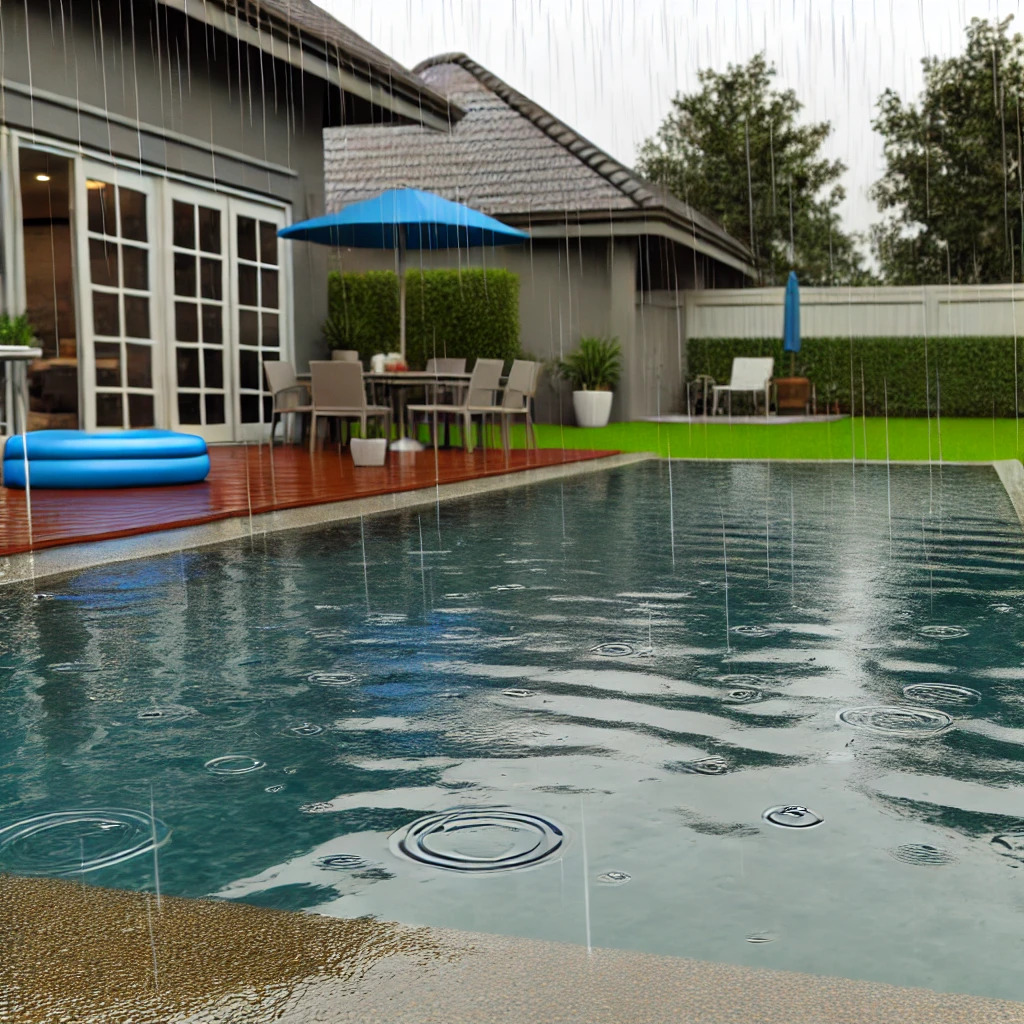Heavy rainfall might seem harmless, but when it leads to a pool overflowing, it can create a host of problems. Not only can the excess water damage your property, but it can also result in a messy cleanup process. The sight of your pool overflowing might cause immediate stress, and you start wondering what to do next.
The best course of action for an overflow pool is to immediately lower the water level and check for any damage. Start by turning off the power to your pool equipment to ensure safety, then use a submersible pump or siphon to remove the excess water. Quick intervention can prevent more serious issues like structural damage or chemical imbalance.
But that’s just the start. There’s more you need to know to manage the situation effectively and prevent costly repairs down the road. Let us walk you through everything you need to do when your pool overflows from rain and you’ll be well-prepared to handle this common issue.
What Should You Do First When Your Pool Overflows?
Safety comes first. Immediately shut off all electrical components connected to your pool when it overflows to prevent any accidents. Afterwards, you can use one of the following methods to address the issue:
1. Use A Submersible Pump
- Place a submersible pump in the shallow end of the pool where it can easily pull in water.
- Connect a heavy-duty hose to the pump and ensure it reaches a safe drainage area like a sewer drain or a part of your yard that can handle excess water.
- Turn on the pump and closely watch the water level to avoid draining too much. Stop the pump when the water level is just below the pool’s edge.
2. Siphoning with a Garden Hose
- Submerge the entire garden hose in the pool, allowing it to fill completely with water.
- Cover one end of the hose with your thumb, then quickly pull that end out and position it in a lower area outside the pool. The water should start flowing out naturally.
- Ensure the draining water is flowing to a safe area where it won’t cause damage. Adjust the hose as needed to maintain the flow until the water level is reduced.
3. Adjust the Filter System
- If your pool has a multiport valve on its filter system, find the lever that controls it.
- Turn the valve to the “waste” setting, which allows water to bypass the filter and exit directly from the pool.
- Turn on the pump and allow the excess water to be expelled through the waste outlet. Keep a close eye on the water level to stop draining at the appropriate time.
What Else Should You Address After the Overflow?
Once you’ve handled the immediate issue of an overflowing pool, there are a few more steps to take to get everything back in order. Overflows can cause hidden problems that need to be addressed to prevent further damage. Here’s what you should look into:
1. Inspect for Structural Damage
Walk around the pool and look for signs of erosion, particularly if your pool is above ground. Erosion can destabilize the pool structure over time.
If the water level dropped significantly, inspect the pool walls and floor for any cracks or damage. This is especially important for concrete or fiberglass pools, where structural integrity can be compromised.
The overflow can cause water to seep under the decking, potentially leading to warping or lifting. Ensure there are no signs of damage to the surrounding deck.
2. Test and Rebalance Pool Chemistry
Heavy rainfall can dilute chemicals and disrupt the balance, making the water unsafe for swimming. Use a pool test kit to measure the pH, chlorine, and alkalinity levels.
If the test shows that levels are off, add the necessary chemicals to restore balance. This may include chlorine to sanitize the water, pH increasers or decreasers, and alkalinity adjusters. After adding chemicals, let the water circulate for about 24 hours and then retest to ensure the levels are stable.
3. Clean Up Debris
Use a skimmer net to remove leaves, twigs, and other large debris that may have washed into the pool during the storm.
Clean out the skimmer and pump baskets, as they can become clogged with debris, affecting the pool’s filtration system.
If the filter has become clogged with fine particles, backwash it according to the manufacturer’s instructions to restore efficient operation.
Final Words
Taking swift action to manage a pool overflow is essential, but don’t overlook the potential for deeper issues. If problems persist, or if you’re uncertain about any aspect of the repair, it’s wise to consult a professional. They can offer expert advice and ensure your pool is fully protected against future damage.

